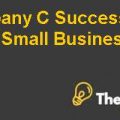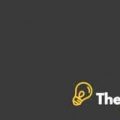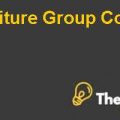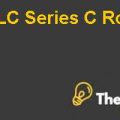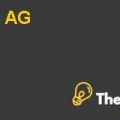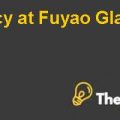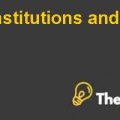
ISKALL ARNO INC. (ABRIDGED)
INTRODUCTION
Iskall Arno Inc. was founded in 1897 as the second income source and the founder of the company was Arno Svalbard, who migrated into Minnesota from Sweden and worked as the wheelwright. He started his business in the basement of the house where he was living and then moved his business into the small rented shop.
In 1967, Iskall Arno became a public limited company and in the year 1986, the company was able to earn $600 million sales. Ice cream was the main source of income and generated 60% of sales for the company. Yogurt was added into its product line in the year 1977 and it generated 20% of sales and remaining 20% sales were divided into fruit juices and bottled water.
In the month of January 1987, capital-budgeting meeting was called in the Iskall Arno Inc. The meeting was called because of the foreseeable expansion of the business and to decide that how much capital budget should be allocated to preventive maintenance, safety enhancement, pollution control, equipment replacements and to improve efficiency. In the meeting eleven projects were discussed and only $80 million would be made available to this expansion. Projects that were discussed in the meeting required a total of $208 million for expansion. There was an uncertainty about projects that what project should be accepted and how it should be accepted. Further, the analysis was made on the basis of the relative urgency of the projects and the possible success of each project. All the projects were financially viable and at the same time these project could be quantified. There were some factors those were qualitative in nature and needed to be considered.
PROBLEM STATEMENT
The main concern of the company was to expand its business operations within the $80 million of capital budget already allocated. Any excessive budget required for the expansion required the approval of the board of director and the allocated expansion budget was not enough for the expansion as eleven projects were highlighted in the meeting. The project selection was based with consideration that how much capital should be allocated.
EVALUATION
The evaluation is made through identification of the business drivers and key issues faced by the company in the situational analysis. The situational analysis focuses on the questions such as evaluation of project is factual of not, the project is the core competency of the company or not. The individual project’s cash flow, NPV of each project and the internal rate of return.
Business Drivers
The business drivers were recognized during the meeting concerning the capital budgeting. The following business drivers were identified.
1.) Expansion
2.) Excellence in operations
3.) Product diversification
Key Issues:
The key issues that are identified when analyzing the situation are follows.
- The board of directors wanted to maintain 50% long debt to equity ratio.
- The capital allocated to all of the projects is $80 million even though all of these projects are viable and required capital of around $208 million.
- The sales of the company are not growing and are at same level from 1984 to the current situation.
Situational Analysis:
Situational analysis comprises of the project analysis and also includes that all of the projects analyzed answering the following questions with the recommendation on these projects.
Projects are factual or not?
- Are these projects the core competencies of the company or not?
- Is there any internal potential to implement the project or not?
- Is there any level of risk related to project and level of incremental risk?
1. Truck Fleet and New Plant
|
Project Analysis |
||
| Truck Fleet | New Plant | |
| Cash flows |
$7.70 |
$23.75 |
| Risk Adjusted NPV |
$(3.12) |
$0.43 |
| Internal Rate of Return |
7.80% |
11.30% |
| Factual Project |
YES |
YES |
| Core Competency of the company |
NO |
YES |
| Internal Potential |
YES |
NO |
| Project Risk |
LOW |
LOW |
| Incremental Risk |
HIGH |
HIGH |
For Iskall Arno, distribution is not the core competency and the company should outsource the distribution department entirely to ensure the good coverage of distributions and to make frequent deliveries.
2. Expand Plant and R & D Project
|
Project Analysis |
||
| Expand Plant | R&D Project | |
| Cash flows |
$7.25 |
$22.5 |
| Risk Adjusted NPV |
$0.23 |
$2.07 |
| Internal Rate of Return |
11.2% |
17.3% |
| Factual Project |
YES |
NO |
| Core Competency of the company |
YES |
NO |
| Internal Potential |
NO |
YES |
| Project Risk |
LOW |
HIGH |
| Incremental Risk |
MEDIUM |
LOW |
From this project, the company will increase sales through additional unit of production. The project is risky in terms of real results as it is not based on the quantitative facts. Company should take some serious consideration on this project as competitors may gain the market share with respect by increasing their R&D department.
- 3. Conveyer System and Pollution Trap
|
Project Analysis |
||
| Conveyer System | Pollution Trap | |
| Cash flows |
$5.25 |
- |
| Risk Adjusted NPV |
$(1.04) |
- |
| Internal Rate of Return |
8.7% |
- |
| Factual Project |
YES |
YES |
| Core Competency of the company |
YES |
NO |
| Internal Potential |
NO |
NO |
| Project Risk |
LOW |
LOW |
| Incremental Risk |
HIGH |
MEDIUM |
This project is quantified, but on the other hand the problem with this is that in case any injury happens then the possibility of lawsuit will increase. Iskall Arno is in a situation where it cannot afford negative publicity. Even though this project is not showing the positive cash flows but it needs a lot of attention. .................
This is just a sample partial case solution. Please place the order on the website to order your own originally done case solution.

